- Matching (Score)
- Our verdict
- Competing TVs
- TV appearance
- Where to buy
- Contrast and black detail
- HDR effect quality
- Factory color reproduction
- Color reproduction after calibration
- Smoothness of tonal transitions
- Image scaling and smoothness of tonal transitions
- Blur and motion smoothness
- Console compatibility and gaming features
- Input lag
- Compatibility with PC
- Viewing angles
- TV efficiency during daytime
- TV features
- Apps
- Playing files from USB
- Sound
- Details about the matrix
Samsung QN85F Review
Available screen sizes:
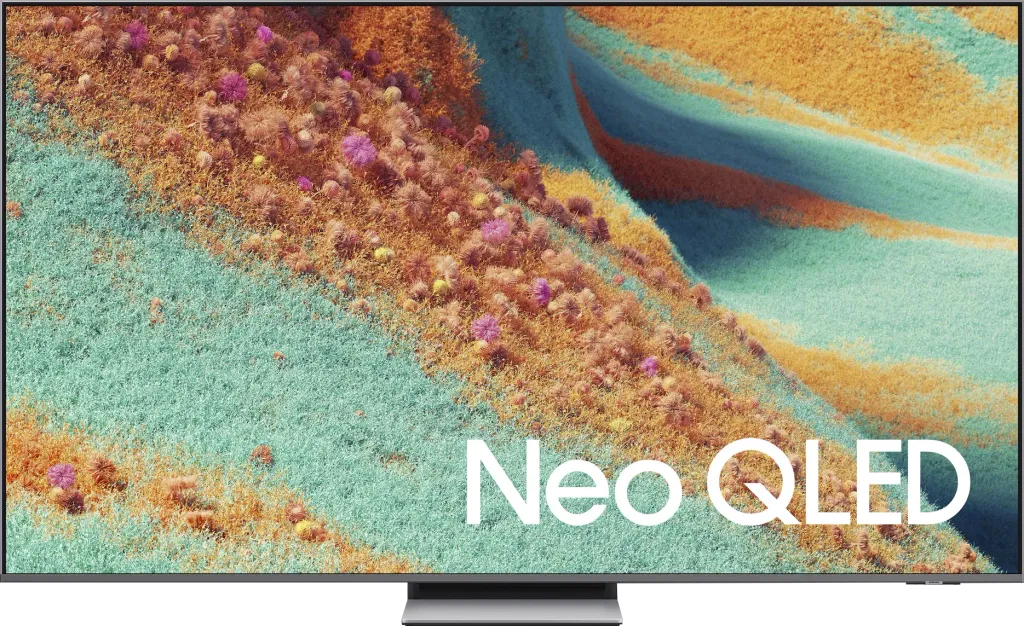
Complete the survey to find out the result
Panel type: LCD VA Refresh rate: 144Hz Brand: SAMSUNG Resolution: 3840x2160 System: Tizen Model year: 2025
After the very successful QN85D model, the new Samsung QN85F carries a considerable burden on its shoulders. Looking at the prices of last year's model during the promotional period, it was hard not to recommend it – practically every buying guide featured it as a reliable choice due to its excellent value for money. The QN85F is supposed to continue this tradition of cost-effectiveness. It is still a Mini-LED television, this time with a refresh rate of 144 Hz, with an improved Tizen and several changes that the manufacturer has prepared for this year. The only question is, what specific innovations does the QN85F bring, and are they sufficient to maintain its position as one of the most recommended models in Samsung's mid-premium range? Let's find out in our review!
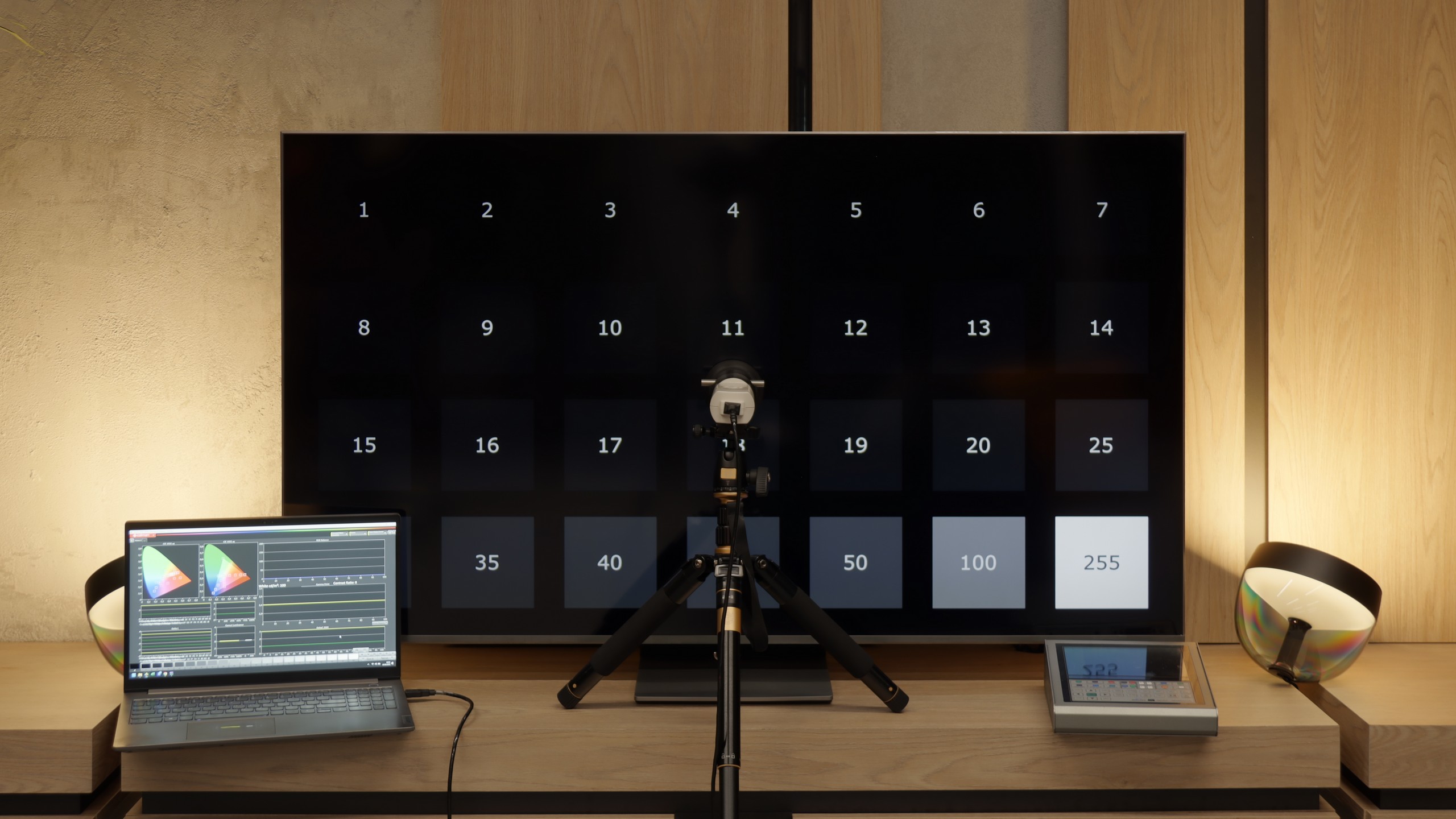
SAMSUNG QN85F - Our verdict
7.6
Overall rating
The Samsung QN85F is a television that perfectly demonstrates the purpose of the Neo QLED line. On one hand, it offers everything that today's user expects – high brightness, excellent fluidity, and full support for gamers. On the other hand, it is still LCD, meaning it comes with certain compromises. The question is whether these compromises genuinely hinder everyday use. In practice, it is hard not to be impressed by how the QN85F performs in HDR films. With a brightness level of 1700–1800 nits, watching dynamic scenes truly delivers the "HDR spark" that is lacking in many competing televisions. The lighting effects in films or series can literally overwhelm with their intensity, yet the television maintains detail and doesn’t turn the entire image into a washed-out blur. This is the kind of spectacularity that viewers investing in a new screen are looking for. Gamers also have reasons to be pleased (well, except for one drawback related to HGIG). It supports 144 Hz, variable refresh rate VRR, and automatic low latency mode ALLM. This is already a standard set in this class, but Samsung goes further and adds a unique feature called Game Motion Plus. With it, the image in games becomes smoother, reminiscent of the operation of motion smoothing, but without a noticeable increase in lag. This solution truly distinguishes the QN85F from the competition. On top of all this comes daily convenience. The Tizen system is fast, stable, and filled with applications that we actually use – from Netflix to Apple TV, and even YouTube and Disney+. Additionally, it supports AirPlay, has a comprehensive SmartThings platform, and the remote control, instead of overwhelming us with dozens of buttons, provides simple navigation and quick access to the most important features. This makes the QN85F a television that one simply wants to reach for on a daily basis. Indeed, one could highlight its shortcomings. There is no Dolby Vision, no USB recording, nor Picture-in-Picture, and the viewing angles typical of VA panels won't impress if you sit at a large angle. But all of this pales in comparison to how versatile and refined the QN85F is. During the day, it performs excellently in bright rooms; in the evening, it provides cinematic emotions in HDR, while in games it ensures fluidity and low input lag that other models would envy. Overall, the QN85F is a television that not only successfully continues the value-for-money tradition of its predecessor, the QN85D, but also expands it with several strong points. It is a piece of equipment that is hard to describe as anything other than a "safe choice" – one that will not disappoint in any scenario and is likely to meet the expectations of even the most demanding users.
Advantages
High HDR brightness (even 1700–1800 nits)
Very good contrast and deep blacks
2 times higher number of dimming zones than its predecessor (55")
144 Hz panel with VRR and ALLM support
Unique Game Motion Plus feature – a unique smoother for gaming
Low input lag
Matte screen finish works great during the day combined with high brightness
Advanced Tizen platform: with AirPlay, SmartThings and a convenient solar remote
Well-designed stand. Hybrid – can be a central base or side legs
Solid sound with pleasant bass and Dolby Atmos support
Disadvantages
No support for Dolby Vision and DTS:X
No recording function from built-in tuners and PiP
Issue with HEIC files in the player
No proper support for HGiG* in game mode
*This seems to be a bug in the update, which we hope Samsung will fix quickly. We are monitoring the situation for you on an ongoing basis.
Movies and series in UHD quality
7.5
Classic TV, YouTube
7.2
Sports broadcasts (TV and apps)
7.0
Gaming on console
8.7
TV as a computer monitor
8.4
Watching in bright light
6.9
Utility functions
7.3
Apps
8.7
Sound quality
7.6
Complete the survey to find out what fits your preferences
SAMSUNG QN85F - Competing TVs in this price range
SAMSUNG QN85F - TV appearance
HDMI inputs: 0 x HDMI 2.0, 4 x HDMI 2.1 (48Gbps) Outputs: Toslink (Optical audio), eARC (HDMI), ARC (HDMI) Network Interfaces: Wi-Fi 2.4GHz, Wi-Fi 5GHz, Ethernet (LAN) 100Mbps
Build quality: BuildQuality-Good
Stand type: Legs
Bezel colour: Silver
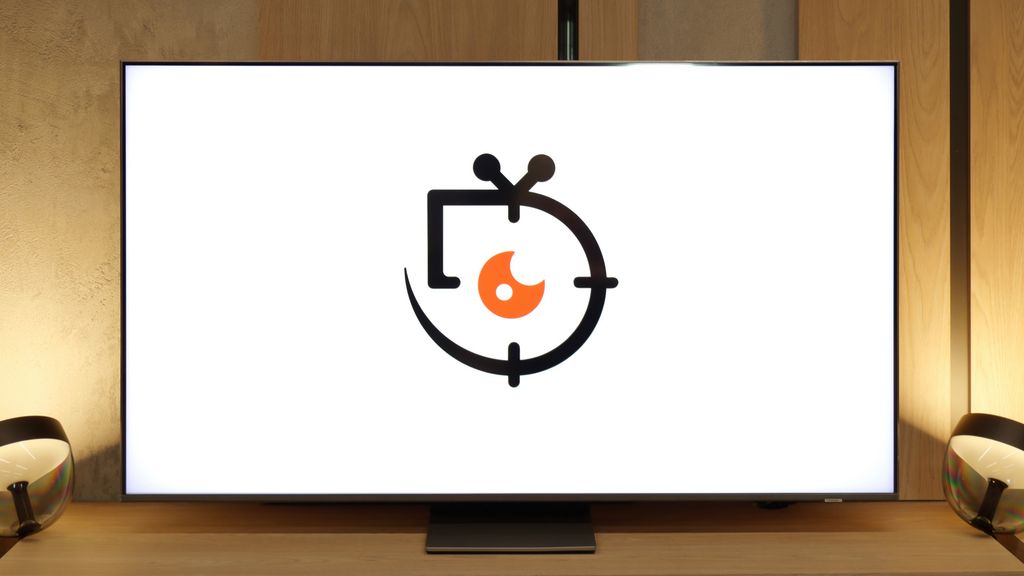
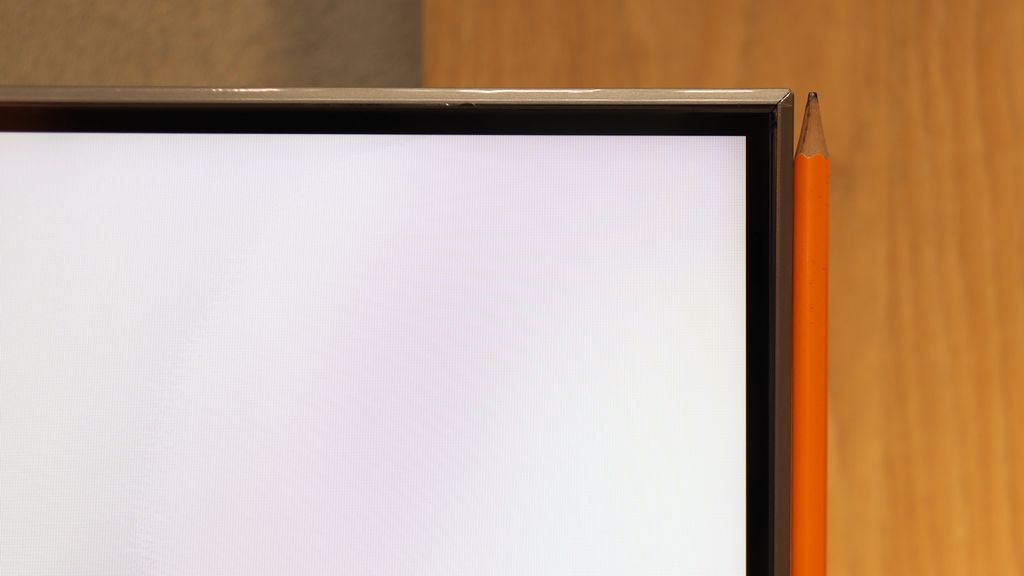
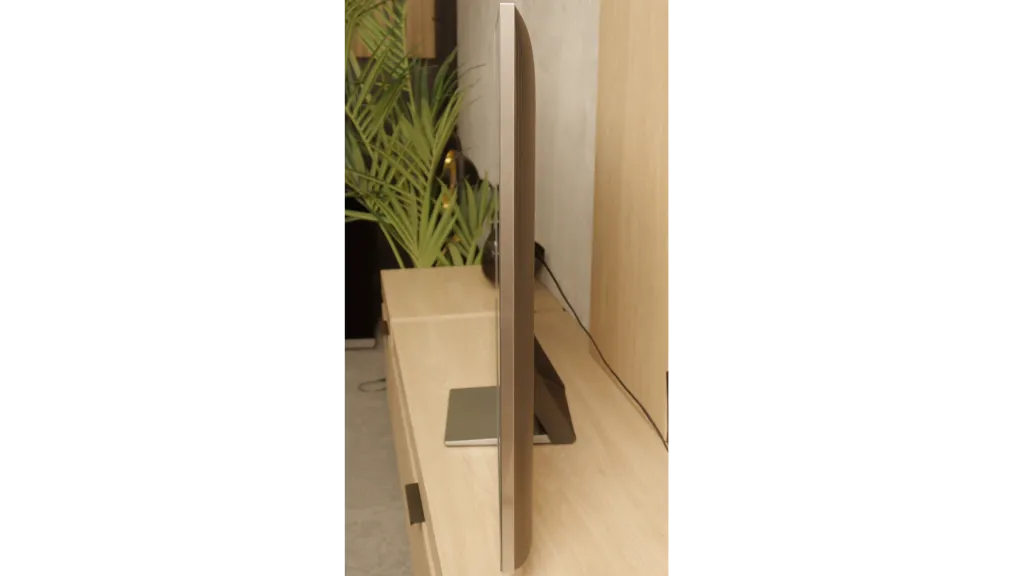
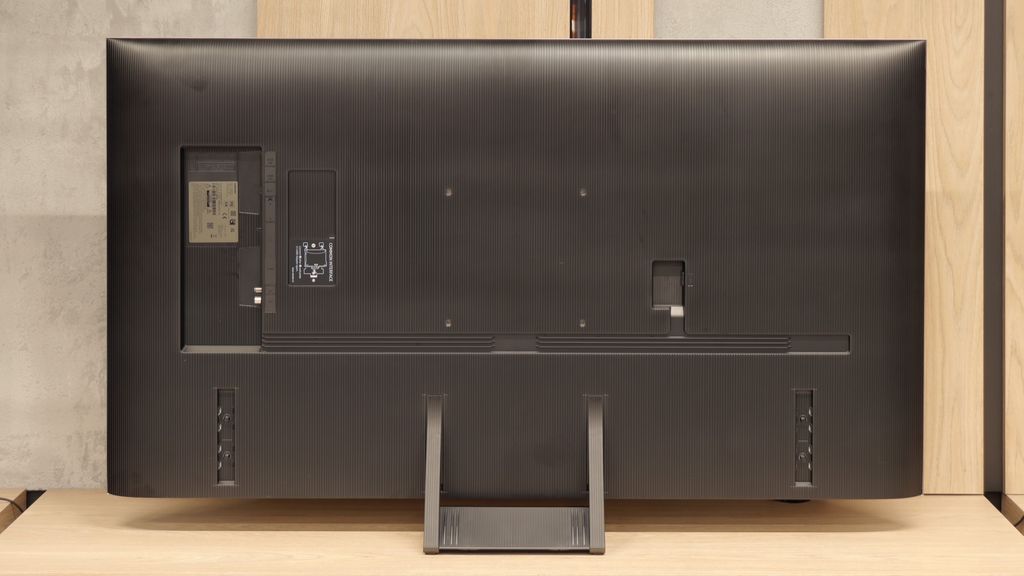
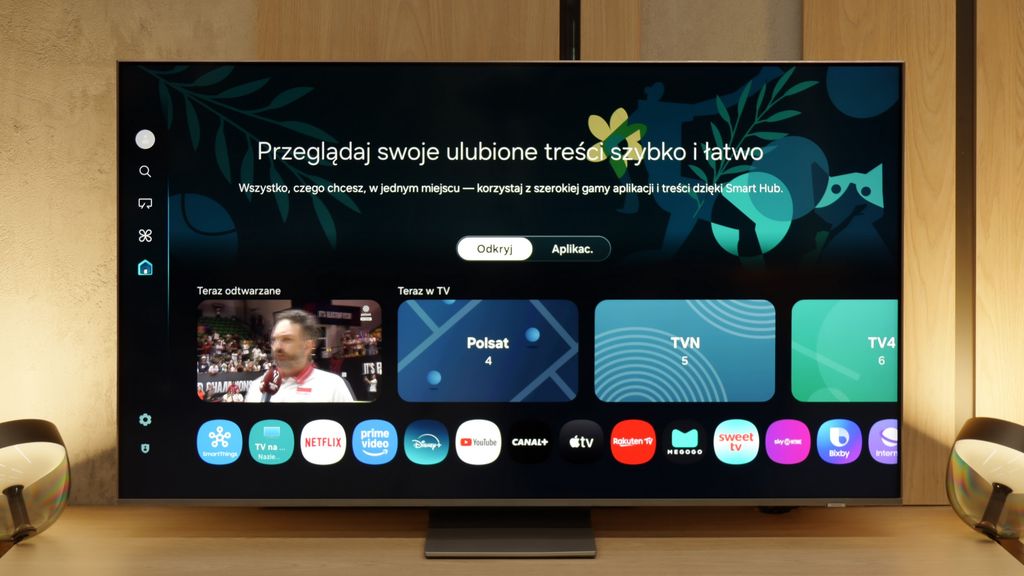
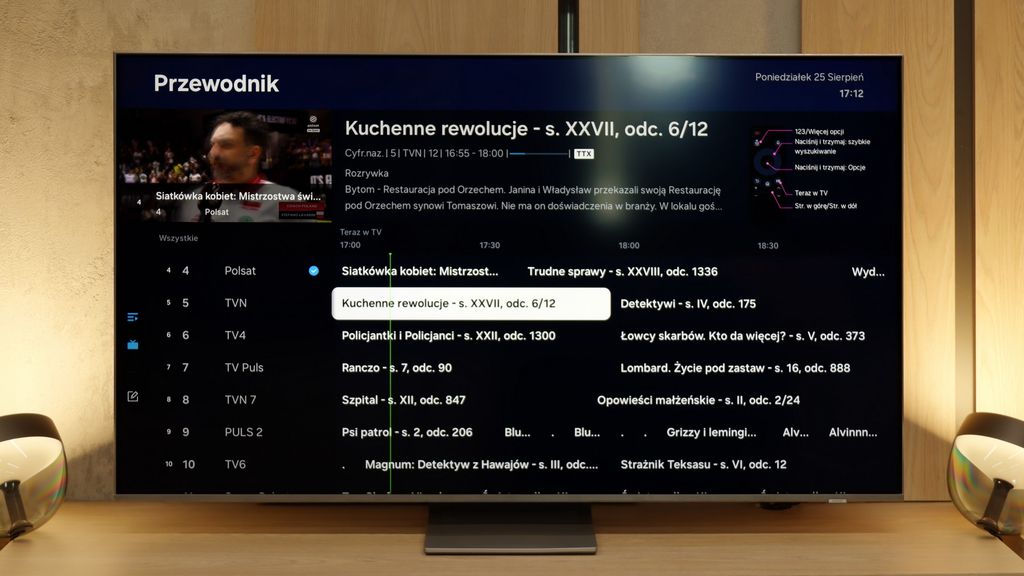
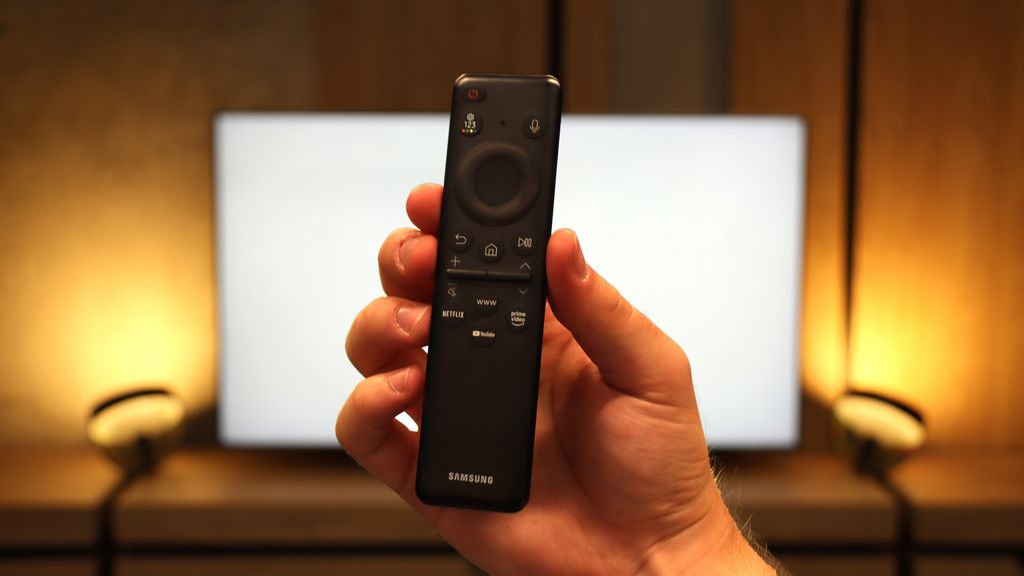
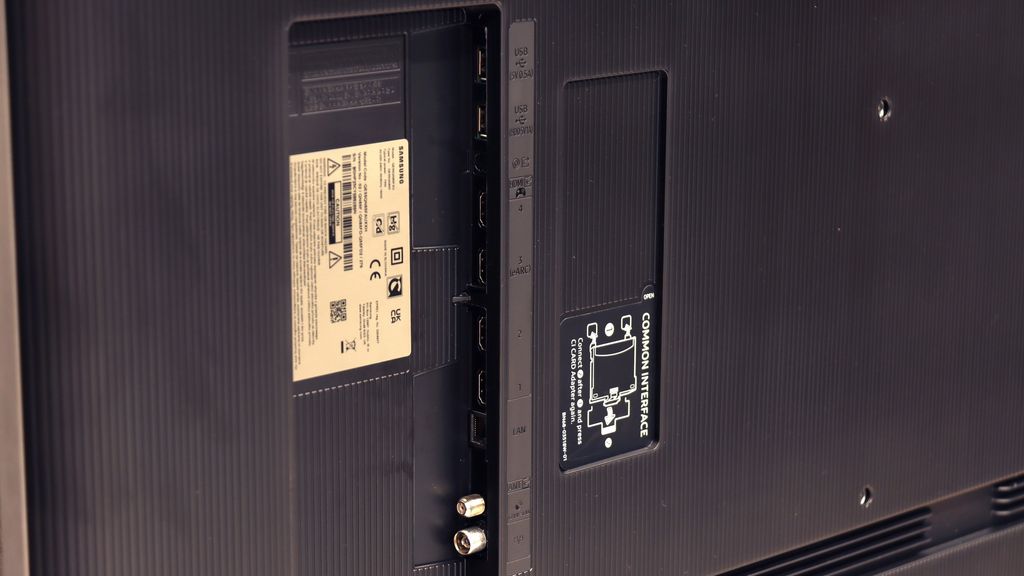
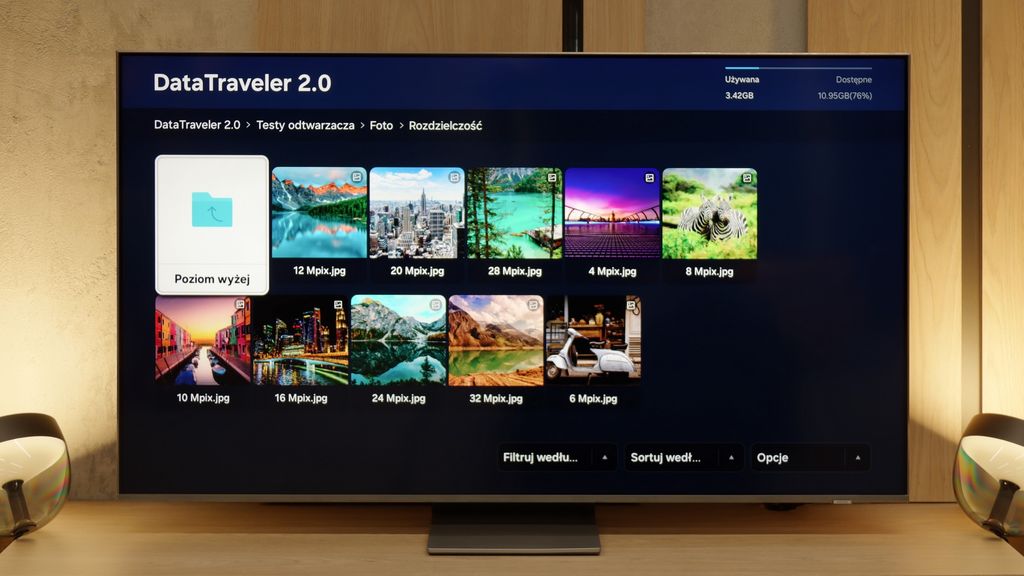
Stand: Height adjustment, Base adjustment
Flat design: Yes
Accessories: Stand
The appearance of the QN85F immediately reveals that we are dealing with a television that fits into Samsung's NeoQLED line. This device is truly well-made, with a very slim frame in a silver-grey colour, mostly metal, except for the lower bezel concealing the electronics. The base is maintained in the same shade and has an unusual hybrid application. In a classic setup, it can be used as a central stand by placing a plastic cover on it. However, if someone desires greater stability, it can easily be converted into two widely spaced legs with a single move. Although the quality of the legs themselves slightly falls short of the premium feel, the solution is thoughtfully conceived and, interestingly, perhaps first used in a television. Furthermore, the legs can also be adjusted in height, raising the screen to better fit the space and any potential soundbar. This is certainly a major plus and a nod to users. If Samsung continues in this direction, we hope that similar solutions will become standard in a greater number of models next year. Returning to the device itself, it is really well constructed and relatively slim at the back to allow for flat wall mounting.
Buy in the best price
Select size:
SAMSUNG QN85F - Contrast and black detail
7.5/10
Local dimming function: Yes, number of zones: 240 (20 x 12)

Result
101,800:1

Result
18,650:1

Result
47,050:1

Result
9,700:1

Result
4,350:1
Visibility of details in the lights:
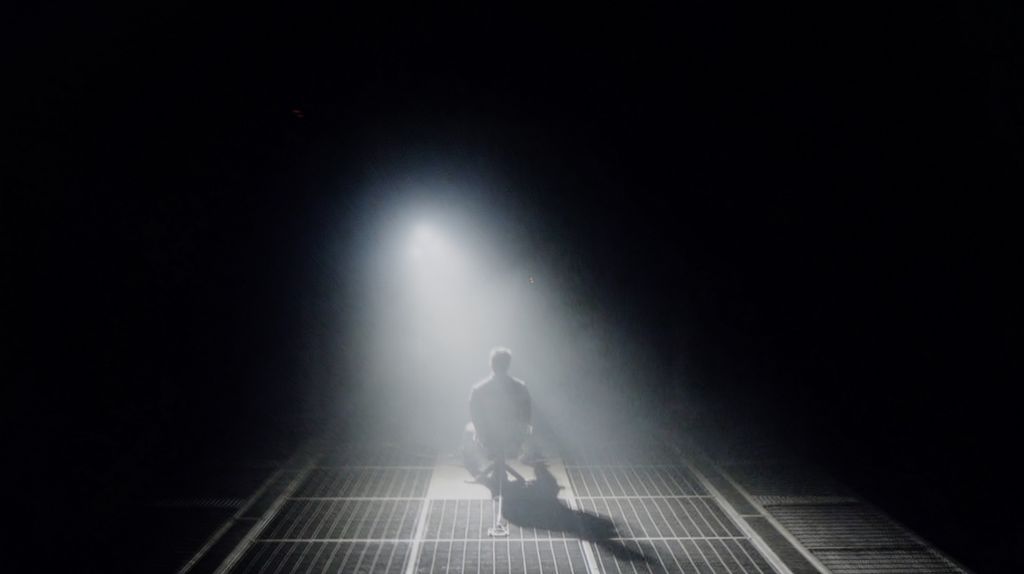
Our editorial office received a 55-inch model with a VA panel. In the case of NeoQLEDs, which are televisions with Mini-LED backlighting, size is of immense importance, as the larger the screen, the more local dimming zones it can contain. This directly translates to higher contrast. In the variant we tested, we counted as many as 240 dimming zones, which is twice as many as last year's QN85D. Theoretically, such an increase should bring an equally impressive improvement in contrast. Unfortunately, practice showed something different – the QN85F offers results very similar to its predecessor. Indeed, in certain scenes with a lot of black or in areas where details in the highlights are crucial, you can see progress, but it is not proportional to the number of zones themselves. Mini-LED technology can be capricious, and sometimes a slight halo appears around small bright objects. This is a typical compromise one must accept with such a solution. Nevertheless, the contrast in the QN85F is at a very high level and will comfortably satisfy most users, even those who are more demanding. However, we have the impression that Samsung could refine the algorithms controlling the dimming, as we know from experience that they can perform exceptionally well in other models.
Halo effect and black detail visibility:
SAMSUNG QN85F - HDR effect quality
6.9/10
Supported formats: HDR10, HDR10+, HLG Color gamut coverage: DCI P3: 89.7%, Bt.2020: 69.8%
Luminance measurements in HDR:

Result
1248 nit

Result
860 nit

Result
1093 nit

Result
465 nit

Result
957 nit
Although more than twice the number of dimming zones compared to its predecessor did not translate into a spectacular jump in black levels and contrast, we definitely felt it in the HDR effect itself. The QN85F is up to 50% brighter than last year's model, making a huge impression in dynamic scenes. The peak brightness can reach almost 1700–1800 nits, which is truly impressive for Mini-LED in this class. The best part is that almost regardless of the scene being watched, the HDR effect remains strong and vibrant. In four out of five test scenes, brightness was maintained around 1000 nits, a level that in most cases allows the viewer to experience the true magic of this format. Of course, in scene number 4 from the film Sicario 2, the limitations of Mini-LED technology become apparent – the brightness of the helicopter’s small light drops to around 500 nits. This result is not stellar, but it is still much more acceptable than last year's model. Samsung therefore deserves applause, as the improvement in brightness in the QN85F is drastic compared to its predecessor. However, it is a shame about a certain trend visible in this year's televisions – the manufacturer has worsened the colour gamut coverage. Although the QN85F has a QLED panel, its score of around 90% DCI-P3 is average, and in the most demanding films, it can lead to less vibrant colours than its predecessor. Despite this shortcoming, the overall HDR effect stands at an excellent level and truly makes a big impression in this class of devices.
Scene from the movie “Pan” (about 2800 nits)

Scene from the movie “Billy Lynn” (about 1100 nits)

Of course, as with any test, we must look not only at the dry measurements but also at the overall experience of watching films. And here one thing is certain – the high brightness of the QN85F was absolutely not in vain. Whether we were reaching for films mastered with the highest image quality on Blu-ray discs or for series and films mainly prepared for streaming on platforms such as Netflix, Amazon, or HBO, the picture looked really very good. The intensity of the lights in productions like Billy Lynn or Mr could, at times, be truly overwhelming, and the level of brightness created a sense of true immersion in HDR. We also had no significant complaints about detail clarity. The image did not blend into uniform, overexposed blobs, and the details remained sharp. Perhaps our editorial eye caught slight nuances 😉: subtle colour shifts towards red or a subtle loss of detail in very small, bright spots. However, this does not change the fact that the QN85F handles HDR films in a decidedly more than satisfactory manner and gives the viewer a sense of engaging with high-quality imagery.
HDR luminance chart:
HDR luminance
The films previously discussed were tested in HDR10 format, that is, in a static version. This allowed us to check how the QN85F performs in adapting to high brightness in scenes designed for the best image quality. And although there were minor issues in this mode, such as slight clipping of details in super-bright whites, the situation changes dramatically when we reach for content in the dynamic HDR10+ standard. In HDR10+, visibility of details is greater, and the problem with overexposed areas practically disappears. This shows that even a bright television like the QN85F can still benefit when presented with content in a format with dynamic metadata. Until recently, HDR10+ was considered a niche solution, but today its popularity has risen significantly and it can increasingly be found on major streaming platforms, including Netflix. This is a very good direction because for a long time, Dolby Vision was the only dynamic format widely available. It remains more prevalent, yet looking at the growing wave of popularity of HDR10+, the absence of Dolby Vision in Samsung televisions is no longer as significant an issue as it was a few years ago.
Static HDR10

Dynamic: HDR10+

Factory color reproduction
4.8/10
Samsung QN85F offers several preset picture modes, but by default, when the television is turned on, it starts in "Eco" mode. And we could actually end the discussion here, because for such a model, using this setting makes no sense – the picture is washed out, unpleasant, and far from what we expect from a television of this class. We therefore carried out our tests in the best of the available modes, which is the Filmmaker mode. Its purpose is to faithfully reproduce what the directors saw during the filming of the movies, and indeed this is the setting that performs best among all factory options. However, this does not mean that it is without flaws.
Both in SDR and HDR, the QN85F quite strongly emphasised warm colours. This resulted from deficiencies in white balance, where there was a distinct lack of blue. Additionally, the picture was sometimes overexposed – as indicated by both the gamma brightness characteristic and the EOTF curve, which showed that the television tends to blow out scenes. In SDR, the colour reproduction errors (Delta E levels of 4-5) were still acceptable, but in HDR the discrepancies became quite large and clearly deviated from what the creators intended to show us. Fortunately, Samsung provides a wide range of calibration tools in its televisions, so – as always – we proceeded with professional calibration to see how much could be improved.
Color reproduction after calibration
8.5/10
After calibrating the film mode, we managed to tame the colours in both modes to near perfection – most of them did not exceed an error value of 3, which is the threshold of perception by the human eye. The image became more natural, fuller, and at the same time free from bloom, which was noticeable right after taking the television out of the box. This shows the great potential of the QN85F and how well it responds to precise settings. However, this does not change the fact that certain technological barriers cannot be overcome. Despite the enormous benefits of calibration, there are still limitations of the panel itself. Although the number of dimming zones has doubled compared to its predecessor, the algorithms controlling the backlighting can manipulate brightness in their own way. Sometimes this leads to slight colour inaccuracies or gently visible halo effects around bright objects. Nevertheless, the experience after calibration is truly pleasant and demonstrates how good a screen the QN85F can be if we just take a moment for proper settings.


SAMSUNG QN85F - Smoothness of tonal transitions
9/10
Slight colour errors are often practically unnoticeable; it is the fluidity of tonal transitions that is a category to which even a less experienced viewer will pay attention. Unfortunate bands and artificial lines can completely spoil the perception of the image. Fortunately, the QN85F handles this aspect almost perfectly. Gradients are smooth, transitions between colours seamless, and there are no artificial streaks or harsh lines separating the hues on the screen. The image remains coherent, and nothing distracts our attention from the content. Only under very extreme conditions did we notice slight issues in the grey palette, but this is a drawback typical of most televisions and is hard to consider a serious negative. In practice, while watching films, we encountered no problems.








Image scaling and smoothness of tonal transitions
7.5/10
Smooth transition function
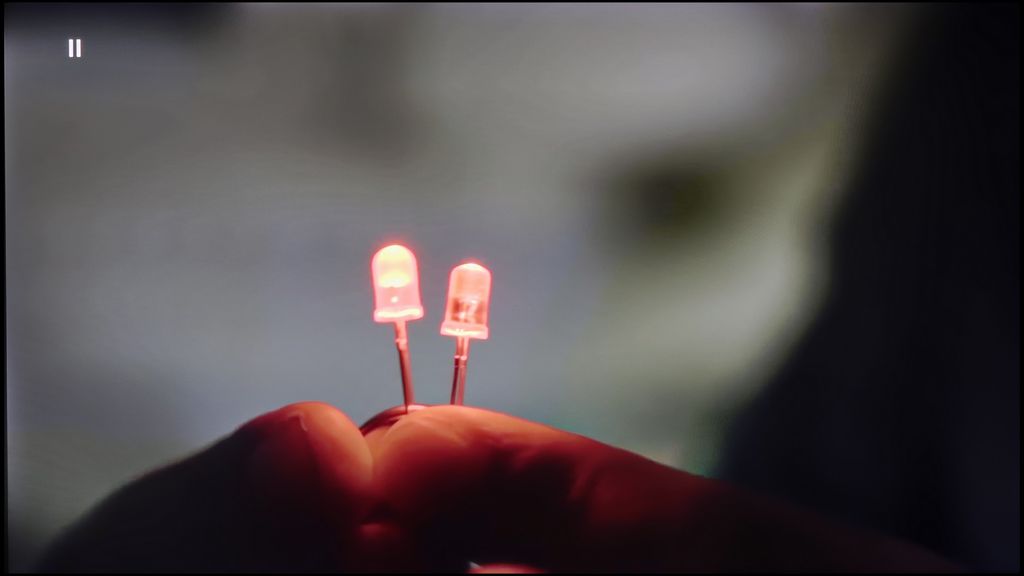
Image without overscan on the SD signal

Although the native tonal transitions on the QN85F with 4K material perform excellently, we do not always deal with content in the highest resolution. At that point, it becomes crucial how the television handles upscaling and digital image processing. This process is managed by Samsung's proprietary processor – AI NQ4 Gen2. In practice, it operates very efficiently. If visible colour banding or other undesirable phenomena occur on the screen, for instance, in materials from YouTube, they can easily be smoothed out using the "noise reduction" feature. Set to a medium level, it improves tonal transitions without excessively blurring desired details. However, it is important to remember that – as with most Samsung televisions – this function heavily interferes with the film grain. Therefore, during cinematic screenings, it is wise to use it cautiously to avoid losing the natural character of the image.
The upscaling itself looks very good. Test materials in lower resolutions were displayed sharply and clearly, with a great deal of detail. The only downside remains the issue of overscan, which is the trimming of the edges of the screen. In most situations, this is not noticeable, but with very old materials below HD quality, there may be cases where a fragment of the image from the left side gets slightly cut off.
SAMSUNG QN85F - Blur and motion smoothness
7.7/10
Maximum refresh rate of the panel: 144Hz
Film motion smoothing option: Yes
Blur reduction option: Yes
BFI function 60Hz: Yes, 60Hz (image flickers)
BFI function 120Hz: No
Brightness drop with BFI: 68%
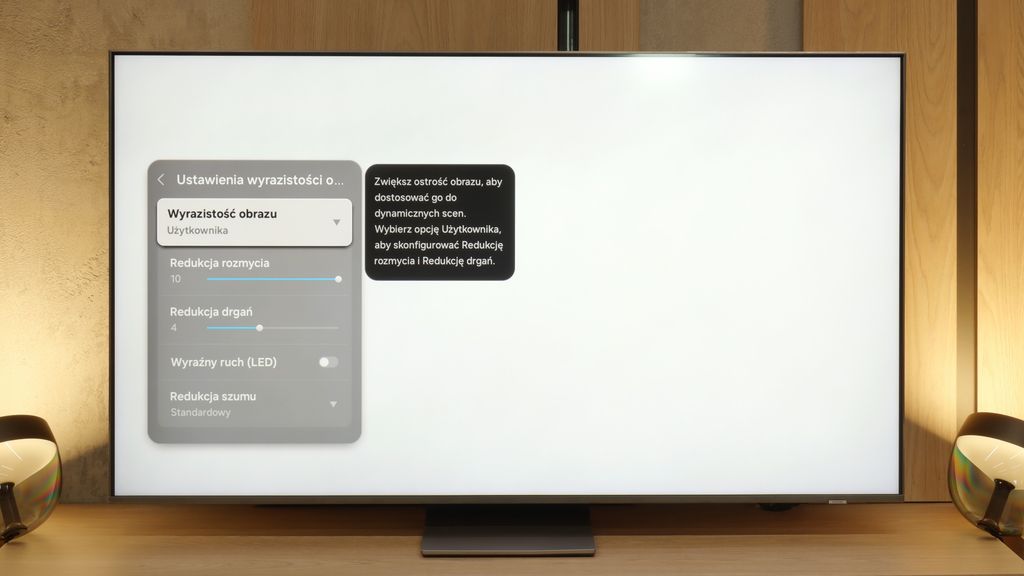
Motion smoothing and fluidity in the QN85F is a topic worth discussing in more detail, as the television is equipped not with a standard 120 Hz panel, but with a 144 Hz one. The extra hertz will mainly be appreciated by PC gamers, but the mere presence of such an option can be seen as a nice addition and a sign of the times – it’s hard to complain about the trend towards faster panels, as in practice, each of us would prefer the image to be as smooth as possible. However, the most important thing is how the television handles typical 120 Hz refresh rates – in the case of consoles, sports, or films recorded at 24 or 30 frames per second. Here, the QN85F performs really well. In films, one can easily adjust the character of the image thanks to the "image clarity" function, where we find two adjustable sliders. Key for screenings is the one responsible for reducing judder. Lower values give the image a more cinematic character with preserved "frame rate," while higher values lead to strong smoothing reminiscent of television theatre.
Blur (native resolution, maximum refresh rate):

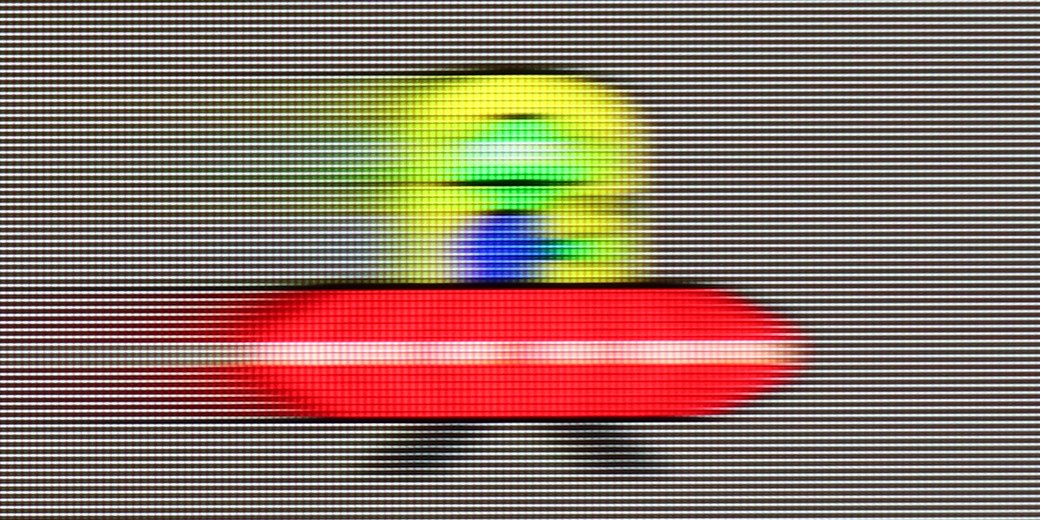
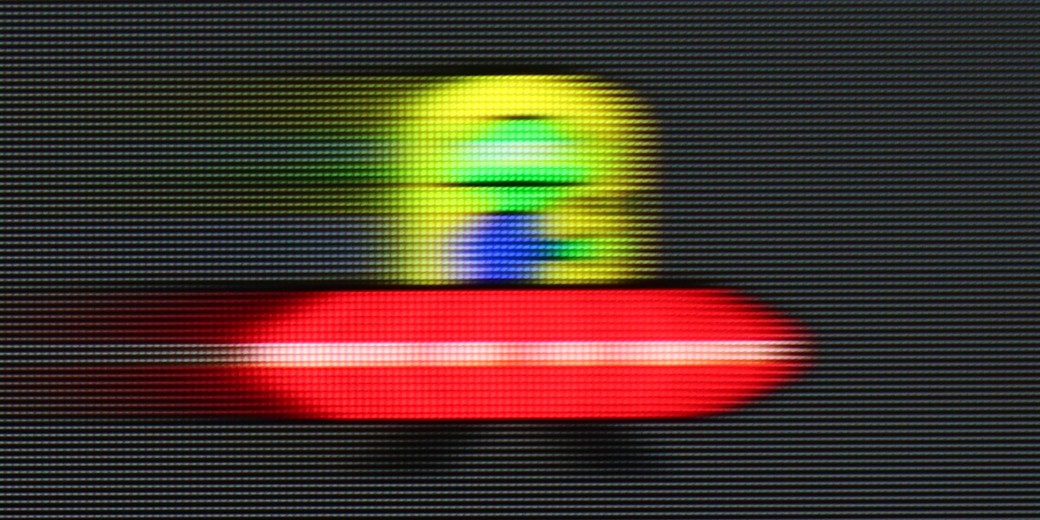
Blur (BFI function enabled):
Image flickers in this mode



Smużenie (4K@144Hz):

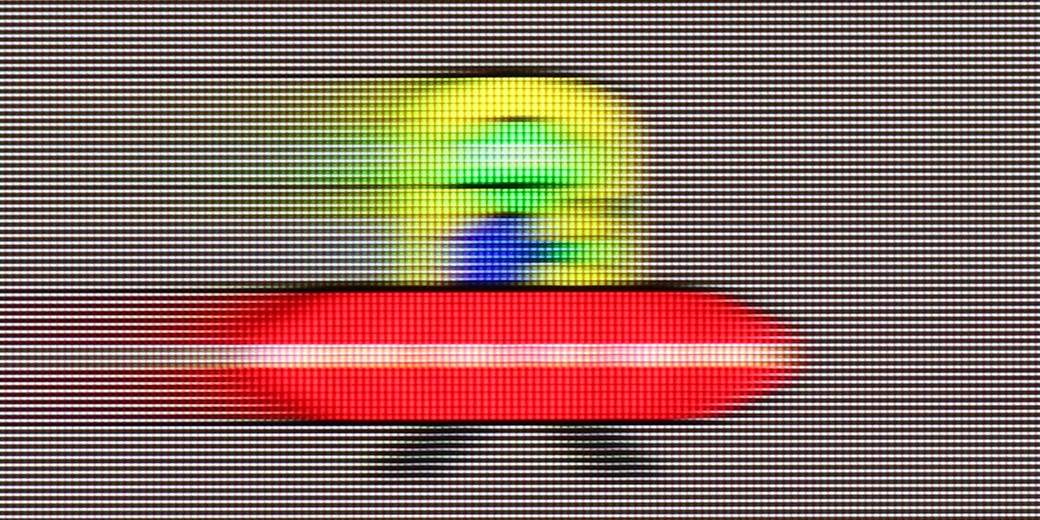
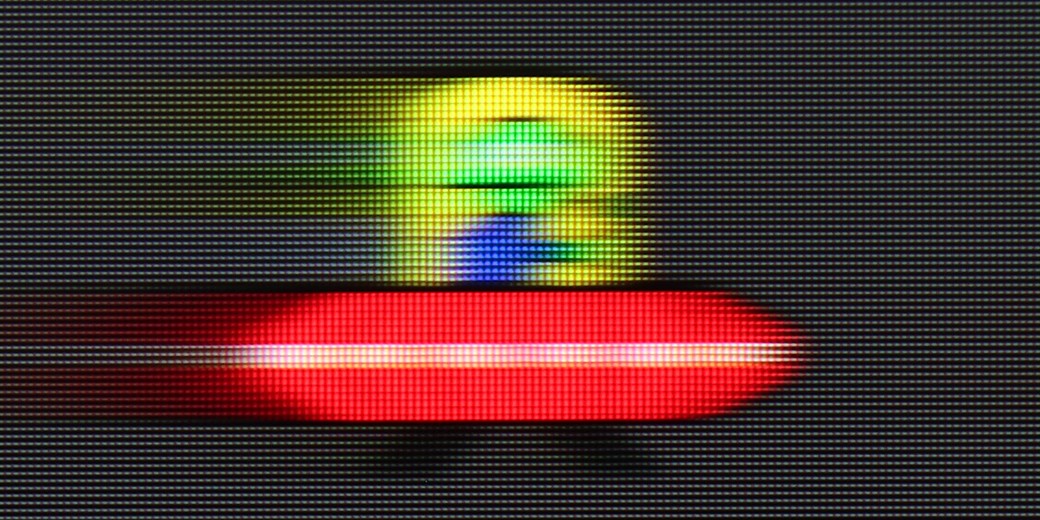
The motion blur in the films is at a decent level. Indeed, in dark backgrounds, one can notice minor issues, but they are subtle enough that they didn't bother us in practice. While watching winter sports or football, where the background was bright and the movement on the screen was fast, the television performed very well, maintaining high fluidity and relatively good image clarity.
SAMSUNG QN85F - Console compatibility and gaming features
8.2/10
ALLM: Yes
VRR: Yes
VRR range: 48 - 144Hz
Dolby Vision Game Mode: No
Correct implementation of HGIG: No
1080p@120Hz: Yes
1440p@120Hz: Yes
4K@120Hz: Yes
Game bar: Yes
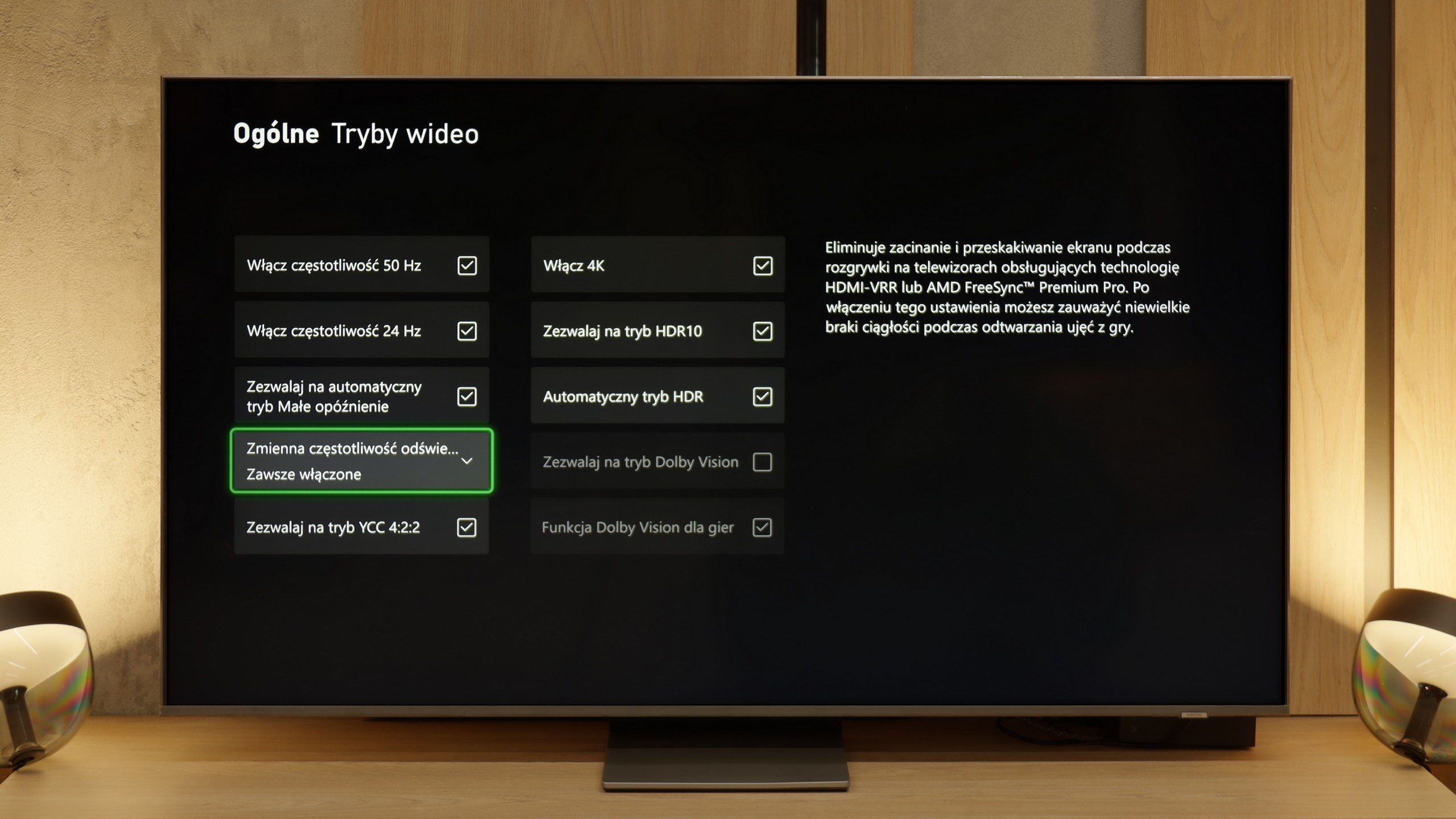
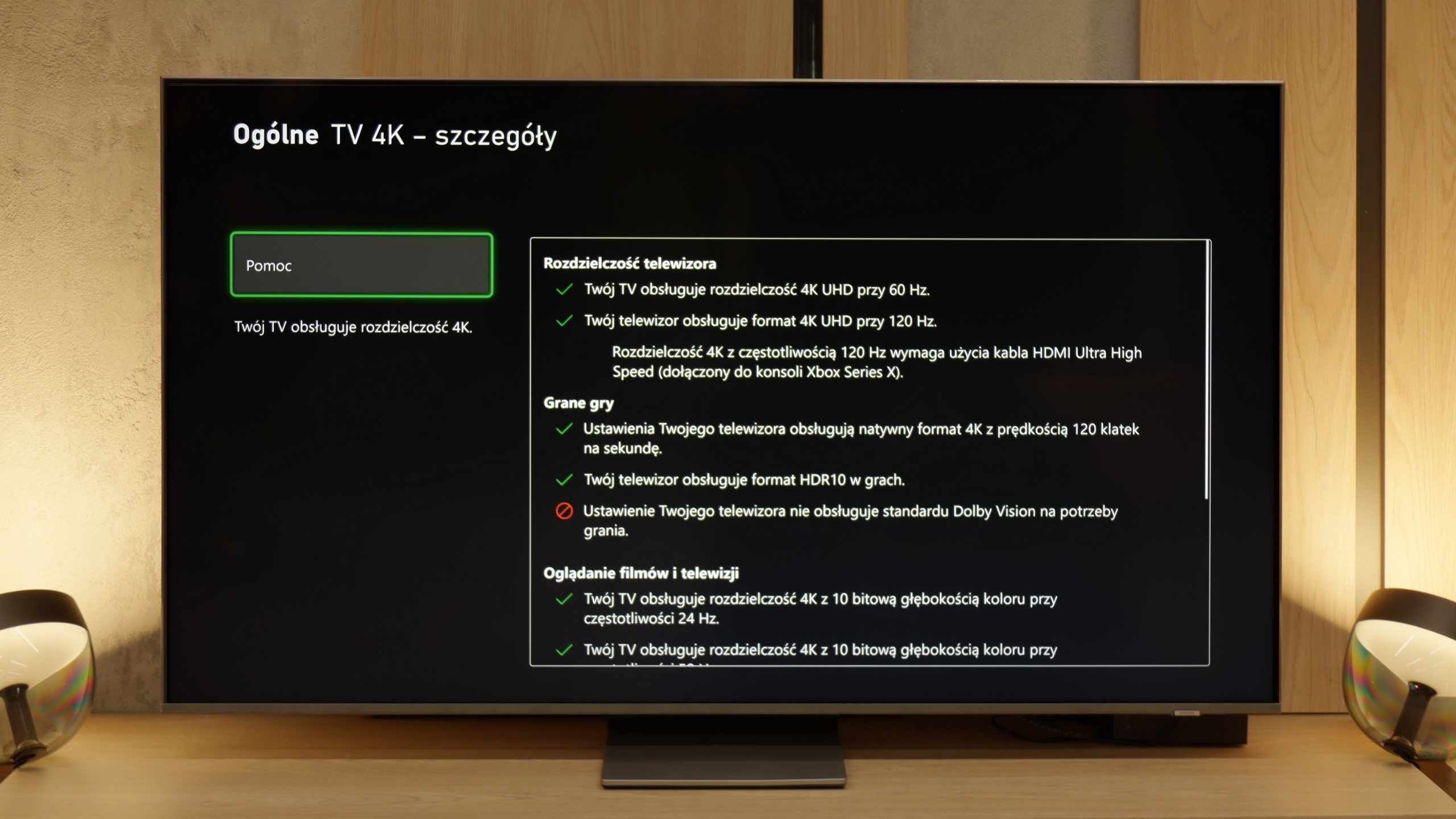
The Samsung QN85F makes a really great impression from the perspective of gaming features. We have four HDMI 2.1 ports here, so we can easily connect several devices simultaneously. There is also variable refresh rate (VRR) to prevent screen tearing, as well as automatic low latency mode (ALLM), which allows the TV to switch to the appropriate settings when we start the console. Additionally, it supports refresh rates of up to 144 Hz – something that PC gamers will particularly appreciate, but the mere fact that such an option is available shows that Samsung is committed to full support for gamers. The Game Bar panel also deserves praise. It provides a quick overview of key parameters – from frame count to refresh mode, right down to shortcuts for picture settings. Instead of digging through the entire menu, everything is at our fingertips, which turns out to be really convenient in practice. However, the most interesting addition is the Game Motion Plus feature. This is nothing more than a motion smoother brought into the gaming world. When turned on, the image becomes smoother, sometimes appearing as if we’re getting several more frames, and importantly – the response time doesn’t increase sufficiently to hinder gameplay. This is a solution that truly distinguishes Samsung's 120Hz televisions from the competition.
The only serious downside remains the lack of proper HGiG support. This is the standard responsible for proper tone mapping in HDR games, ensuring that brightness and contrast are displayed according to the creators' intentions. Without HGiG, we have to adjust the brightness manually, which doesn’t always result in the ideal outcome. The feature was available in previous models, but it disappeared in the QN85F after one of the updates. We hope that Samsung will quickly address this issue, and we will be monitoring whether it has been resolved.
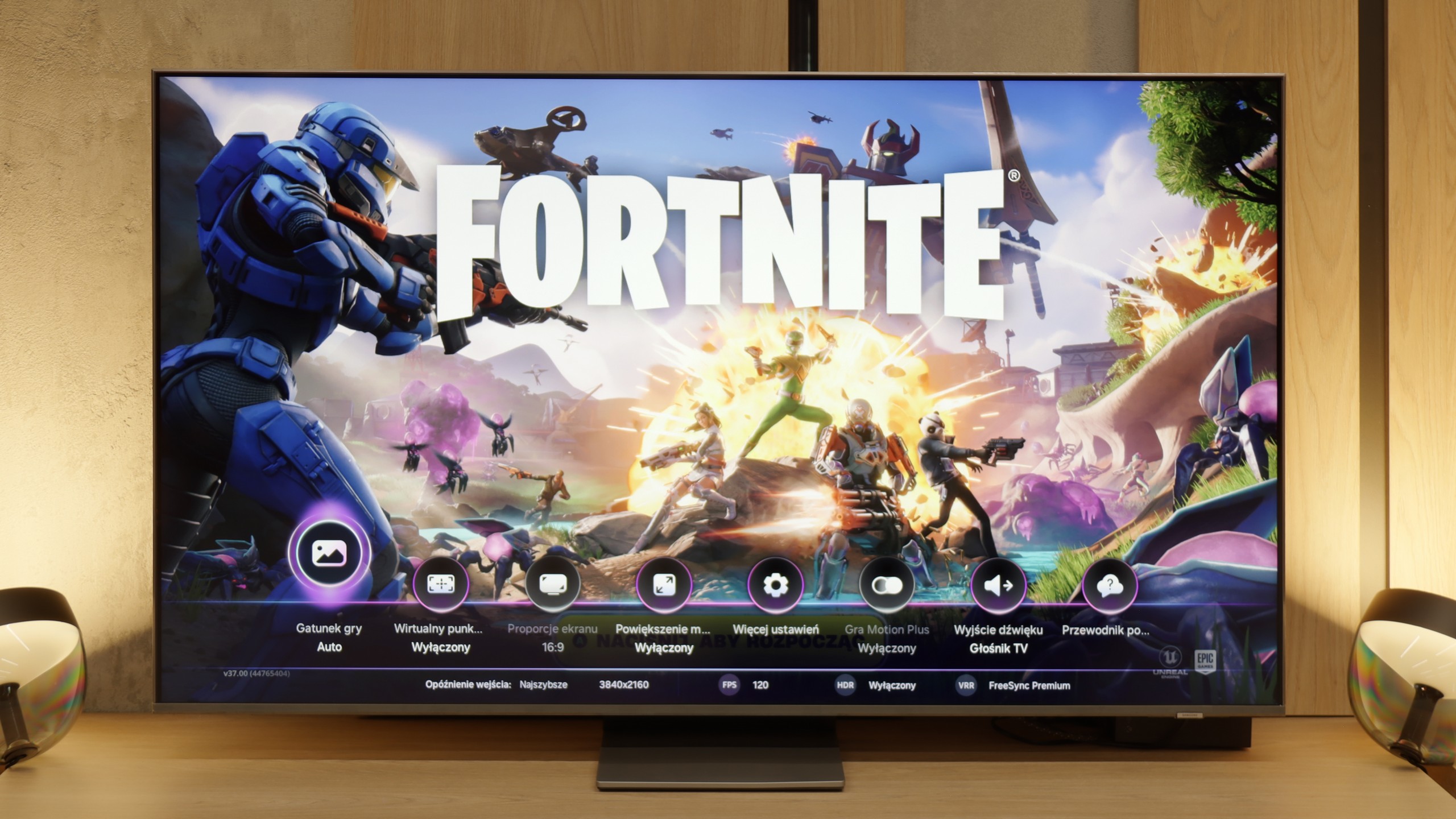
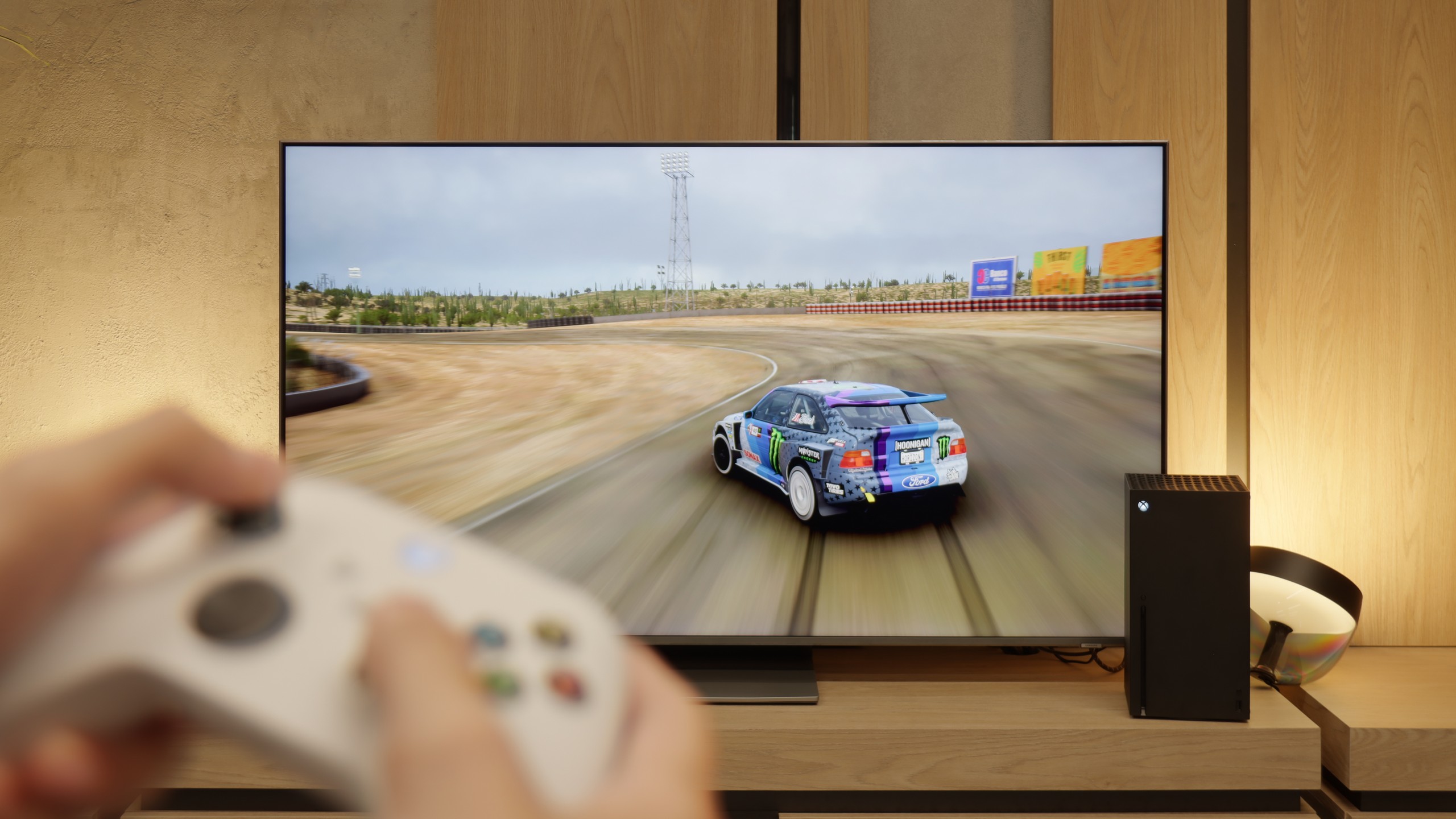

SAMSUNG QN85F - Input lag
9.8/10
The input lag on the QN85F is at a very high level. With content at 120 or 144 Hz, the values often oscillated below 10 ms, which is a truly remarkable result. Naturally, when gaming at 60 Hz, the lag doubles, but it still remains low enough that in practice it is virtually unnoticeable. This means that the QN85F will perform well both in dynamic e-sports games and in more tranquil console titles.
| SDR | HDR | Dolby Vision |
|---|---|---|
| 1080p60: 16 ms | 2160p60: 13 ms | |
| 1080p120: 9 ms | 2160p120: 12 ms | |
| 2160p60: 16 ms | ||
| 2160p120: 9 ms |

SAMSUNG QN85F - Compatibility with PC
8.4/10
Chroma 444 (maximum resolution and refresh rate): Yes
Font clarity: Very Good
Readability of dark text and shapes: Average
Input lag in PC mode (4K, maximum refresh rate): 9ms
Matrix subpixel arrangement: BGR
Max refresh rate: 144Hz
G-Sync: Yes
The QN85F performs really well in terms of cooperation with a computer. Thanks to the PC mode with a refresh rate of up to 144 Hz, support for G-Sync, and low input lag, playing on a personal computer is very enjoyable and shouldn't cause irritation even for more demanding gamers. The readability of the fonts is also good – the television supports chroma 4:4:4, so standard texts look sharp and clear. The problem arises only with very thin letters. Regardless of the refresh rate setting – whether it's 144, 120, or 60 Hz – horizontal, thin lines were poorly visible. Reducing the refresh rate slightly improved the situation, but never enough to say that they were displayed perfectly.
SAMSUNG QN85F - Viewing angles
3.2/10
Brightness drop at an angle of 45 degrees: 73%
The viewing angles on the QN85F are the classic Achilles' heel of most LCD televisions with VA panels. Looking at the screen from an angle, the drop in brightness becomes noticeable quite quickly, the whites start to grey, and the colours lose their intensity. This is the price to pay for the high contrast that this technology offers. Samsung could have included a better coating to widen the viewing angles in this model, but it is not present here. In practice, this means that the best viewing experience is achieved when sitting directly in front of the television, and any significant deviation will result in a noticeable loss of image quality.
SAMSUNG QN85F - TV efficiency during daytime
6.9/10
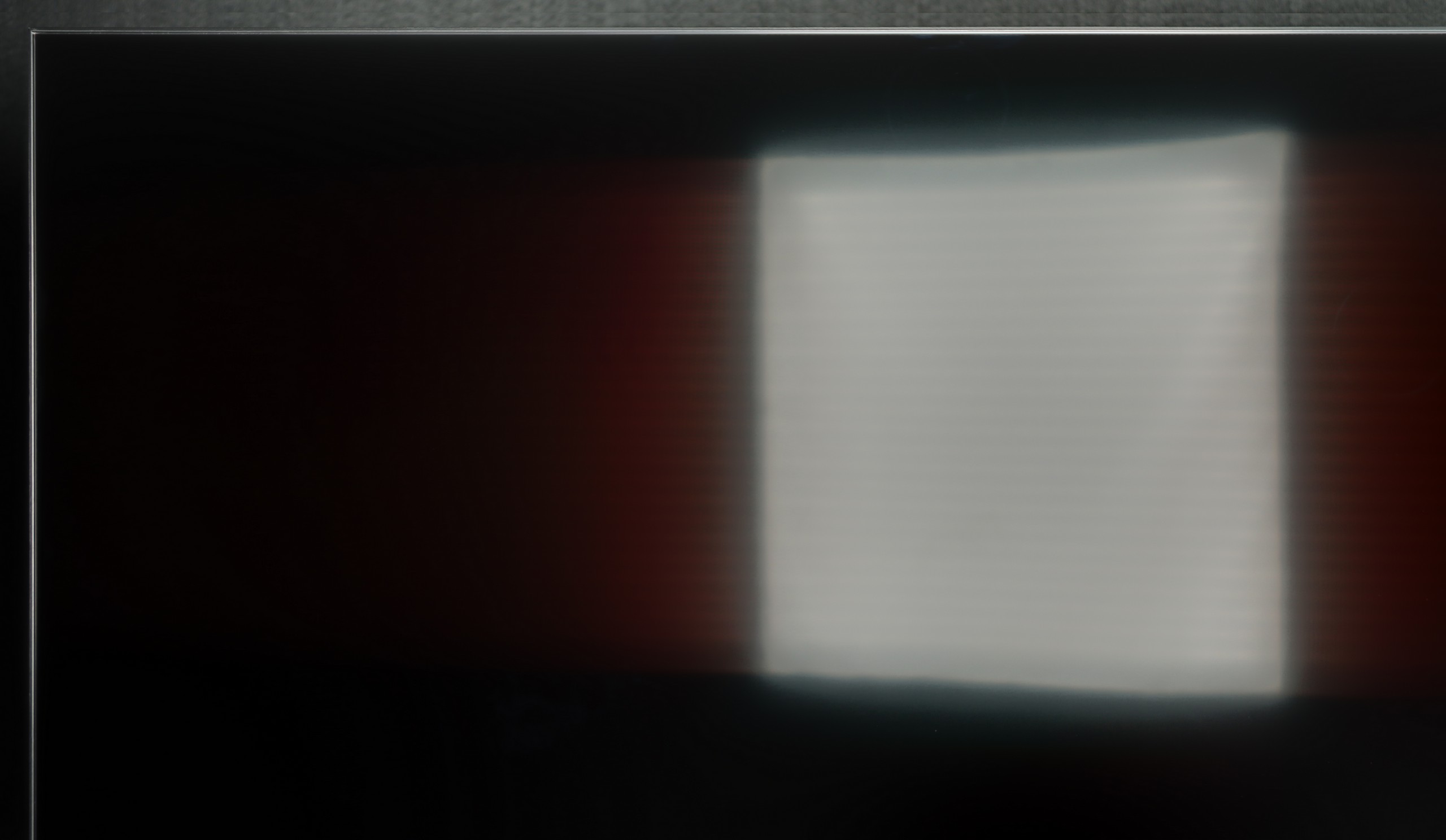

Matrix coating: Satin
Reflection suppression: Good
Black levels during daytime: Good
The QN85F performs excellently during the day. The satin finish of the panel combined with high brightness makes it a television designed for bright rooms. Colours do not lose their intensity, and the picture does not fade even when a lot of light enters. The television itself is bright enough to handle a living room with large south-facing windows without any issues. Therefore, the QN85F provides us with an image that allows us to watch films or matches during the day without annoying reflections and the feeling that the picture disappears in the sunlight.
Matrix brightness
Average luminance SDR
Samsung QN85F : 690 cd/m2
SAMSUNG QN85F - TV features
7.3/10
System: Tizen
System performance: Good
- HDMI inputs: 0 x HDMI 2.0, 4 x HDMI 2.1 48Gbps
- Outputs: Toslink (Optical audio), eARC (HDMI), ARC (HDMI)
- Network Interfaces: Wi-Fi 2.4GHz, Wi-Fi 5GHz, Ethernet (LAN) 100Mbps
- TV reception: DVB-T, DVB-T2, DVB-S, DVB-S2, DVB-C
Classic features:
Recording to USB (terrestrial TV): No
Recording programming: No
Picture in Picture (PiP): No
RF remote control (no need to aim at the screen): RF
Backlit remote control: No
Teletext: Yes
Audio only mode: Yes
Bluetooth headphones support: Yes
Simultaneous Bluetooth headphones & TV audio: Yes
Smart features:
AirPlay: Yes
Screen mirroring (Windows Miracast): Yes
Voice search: Yes
Voice search in native language: Yes
Ability to connect a keyboard and mouse: Yes








Smart TV and Tizen System
The Samsung QN85F runs on the proprietary Tizen operating system, which has been one of the strongest points of the Korean manufacturer for years. The platform operates quickly, is well-developed, and provides access to virtually all necessary applications. It supports AirPlay, allows screen mirroring, voice search, and has a very clear interface. It is all controlled by a remote with a minimal number of buttons, designed for quick access to the most important applications.
Classic TV Features
In terms of classic television functions, the QN85F offers a rather basic set. The EPG interface is readable and easy to use, resembling a traditional teletext programme list. A drawback is the lack of USB recording and the absence of PiP functionality, which Samsung has offered in many other models. This is due to the use of single tuners in the QN85F. For some, this may be a disadvantage, but considering how few viewers today use traditional linear television, it may not matter much to the majority of users.
SmartThings and Device Support
A strong element of the entire platform is the SmartThings application. Thanks to it, we can integrate the television with other home devices – not just those from Samsung. We can connect smart lighting such as Philips Hue or Yeelight, video doorbells, and many other devices to the system. SmartThings also allows us to control the television without using a traditional remote – we can use the app on a smartphone, mouse mode, or gesture control if we have a Samsung watch. This makes the QN85F part of a larger ecosystem and fits perfectly into the smart home IoT trend.
Sound connection options
HDMI audio:
Other audio outputs:
Toslink: Yes
Wireless audio:
Bluetooth: Yes
Samsung Q-Symphony (Speaker extension): Yes
Obsługiwane formaty audio:
Dolby Digital Plus 7.1: Yes
Dolby True HD 7.1: No
Dolby Atmos in Dolby Digital Plus (JOC): Yes
Dolby Atmos in Dolby True HD: No
DTS:X in DTS-HD MA: No
DTS-HD Master Audio: No
Ułatwienia dla seniorów
Numeric keyboard on TV: No
Font size adjustment: Yes
Audio description: Yes
SAMSUNG QN85F - Apps
8.7/10























SAMSUNG QN85F - Playing files from USB
9.1/10

| Maximum photo resolution: | Supported photo formats: |
|---|---|
The player in the QN85F works as most people expect; it supports practically all popular formats and is more than sufficient for even the more demanding users. Movies, music, photos – everything runs smoothly. The only hiccup occurs with HEIC files, which are photos from Apple devices. According to the specifications, they should work, but in practice, they simply do not open. Thumbnails are visible, but the file refuses to launch. This seems to be a common software glitch. Aside from that one issue, the player performs well and does not give rise to complaints.
SAMSUNG QN85F - Sound
7.6/10
84dB
Maximum volume
Supported codecs
(TV speakers)
Dolby Digital Plus 7.1
Dolby True HD 7.1
Dolby Atmos in Dolby Digital Plus (JOC)
Dolby Atmos in Dolby True HD
DTS:X in DTS-HD MA
DTS-HD Master Audio
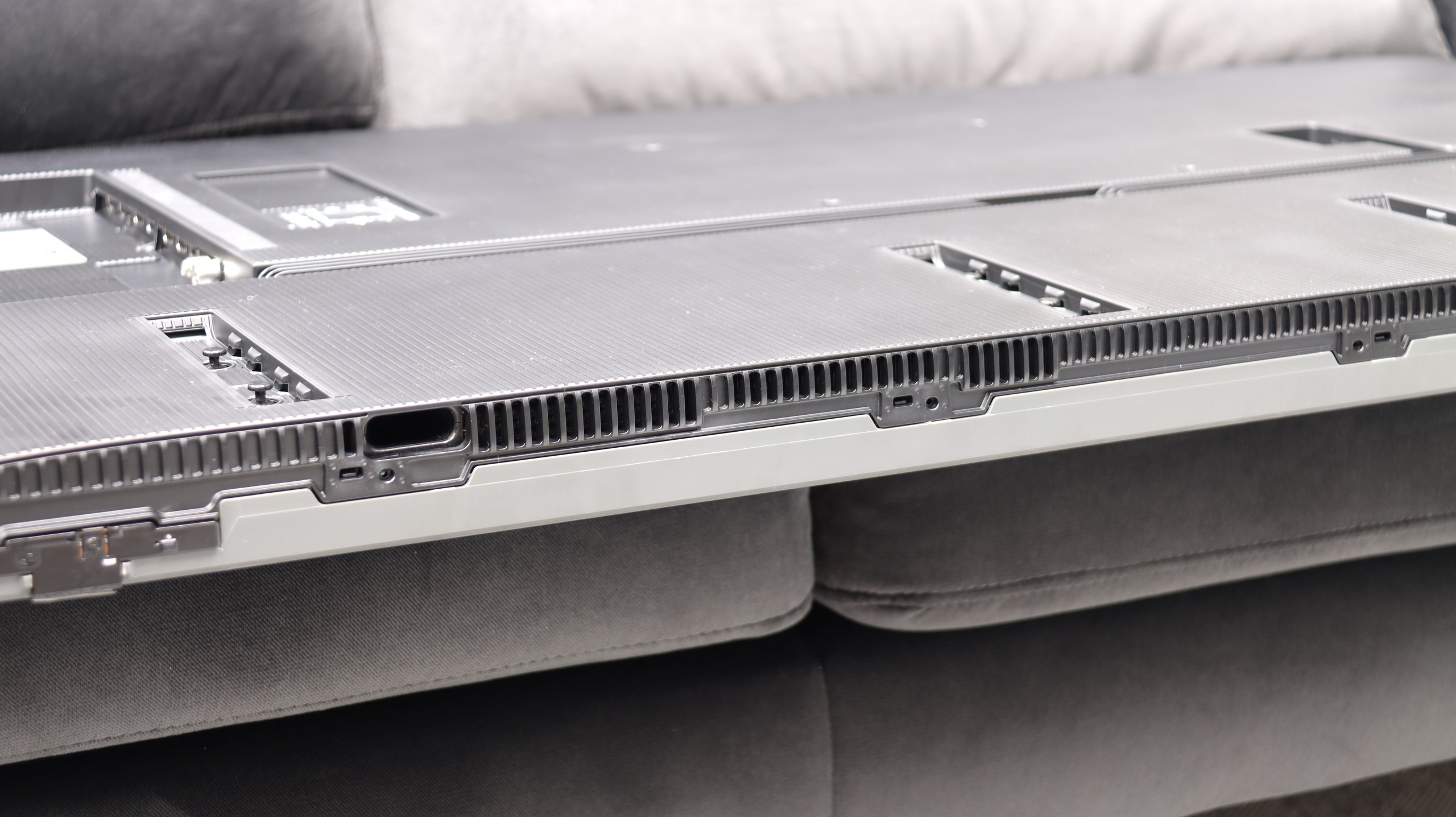
The Samsung QN85F is equipped with a 2.2 system with a power of 40 W, and when it comes to built-in speakers, it performs really well. The bass is pleasant, and the dialogues are clear and easily heard even during louder scenes. Even at maximum volume, the television does not produce any unwanted vibrations and nothing crackles. At the bottom of the casing, there is a subwoofer responsible for the bass – therefore, when installing, it is worth ensuring that it is not obstructed by anything.
As for formats, the QN85F does not support DTS:X audio, which has been a standard from Samsung for several years now, forcing Blu-ray enthusiasts to connect audio devices first to the home cinema and then to the television. However, in return, we receive support for the more popular Dolby Atmos format, which can add additional space to sound in films and series.
Acoustic Measurements
84dBC (Max)
75dBC
SAMSUNG QN85F - Details about the matrix
Software version during testing: T-PTMFDEUC-0090-1126.0, E2540300, BT-S
Subpixel Structure:
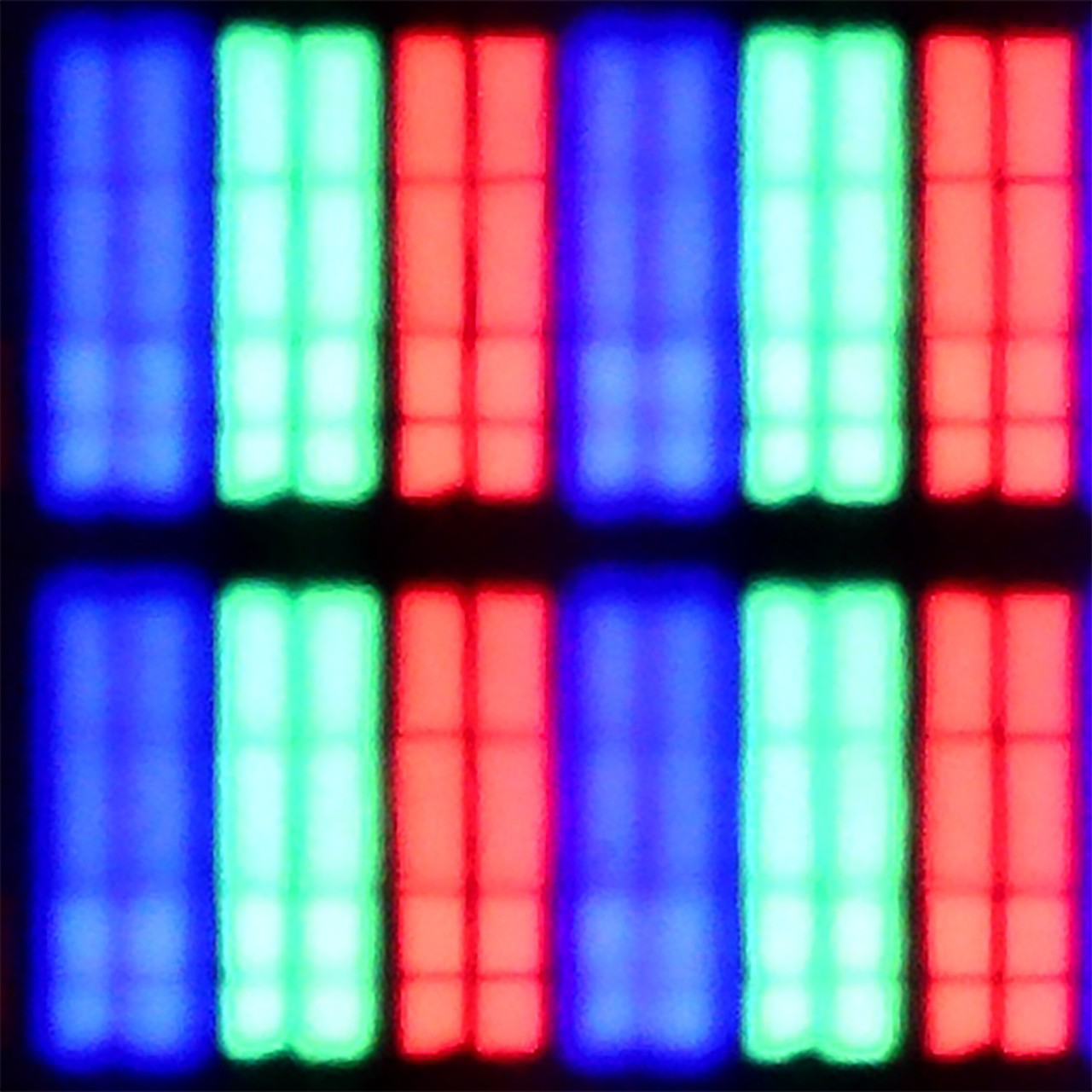
Panel uniformity and thermal imaging:
Backlight Type: Mini-LED QLED

Founder and originator of the "ChooseTV" portal

Journalist, reviewer, and columnist for the "ChooseTV" portal
See articles related to Samsung QN85F :
4/3/2025
Shopping Reviews
The best Samsung televisions 2024 / 2025! Which Samsung tele... 4/30/2025
Our channel Youtube
Intelligent calibration of Samsung TV in SmartThings 6/23/2025












